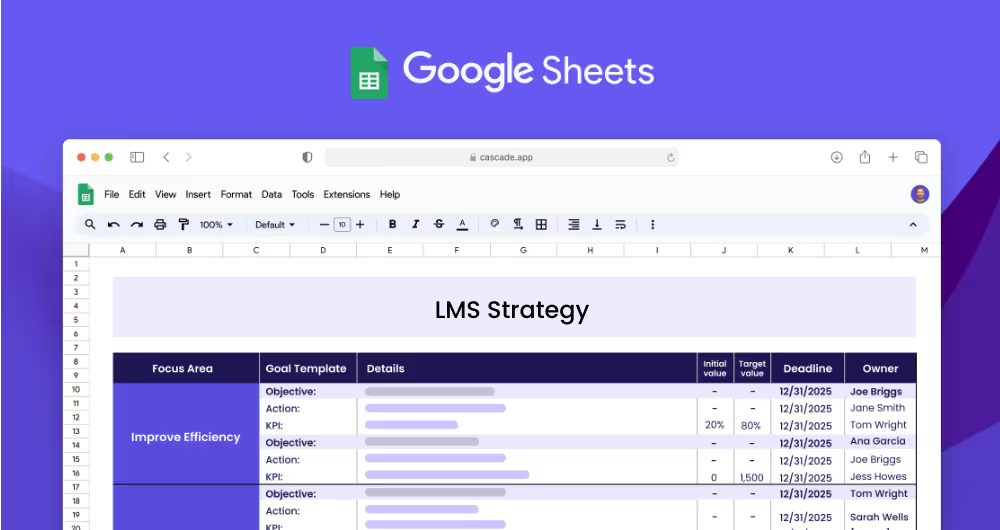A Learning Management System (LMS) strategy is a plan of action designed to ensure that an organization’s learning and development goals are achieved. This plan includes setting objectives, establishing and measuring key performance indicators (KPIs), and implementing projects in order to achieve those objectives. A LMS strategy is a critical tool for any organization seeking to improve their learning and development operations.
Each focus area has its own objectives, projects, and KPIs to ensure that the strategy is comprehensive and effective.
This LMS Strategy template is designed specifically for learning and development teams of all sizes and industries. It provides a comprehensive and actionable guide to help them create a comprehensive strategy to manage their learning management system. This template provides a road-map to achieve their learning and development objectives, as well as step-by-step guidance on how to plan, measure, and execute their strategy.
The first step to creating a successful LMS strategy is to define the focus areas. Focus areas are the broad topics that you would like to address with your strategy. Examples of focus areas could include increasing usability, increasing performance, or enhancing security. Identifying these focus areas will help you form the goals of your strategy.
Once you have identified your focus areas, you need to think about the objectives that could fall under that focus area. Objectives are what your organization is aiming to achieve within each of the focus areas. This could include increasing user adoption, decreasing onboarding time, or improving system speed.
Once you have identified the objectives, you will need to set measurable targets, or key performance indicators (KPIs), to tackle each objective. KPIs are measurable outcomes that you can use to track your progress towards achieving your objectives. For example, increasing active user count from 500 to 750 or decreasing onboarding time from 30 minutes to 15 minutes.
Once you have set your KPIs, you will need to identify and implement related projects to achieve those KPIs. Projects (or actions) are steps that you will take to achieve the objectives and KPIs that you have set. For example, increasing system functionality and features or improving system architecture.
If you’re ready to accelerate your strategy and see quicker results, Cascade Strategy Execution Software is your next step. Unlike manual spreadsheets that can bog down your progress, Cascade offers a dynamic platform that enhances real-time updates, centralized collaboration, and automated reporting. This means your team can easily track progress, adjust strategies quickly, and maintain alignment across all levels. Sign-up for free or book a demo with one of our strategy experts to explore how we can help you streamline and succeed.


